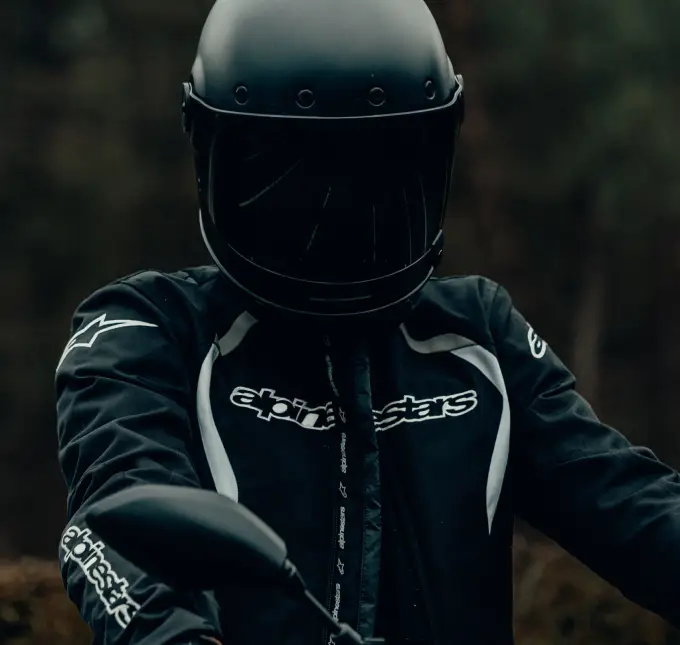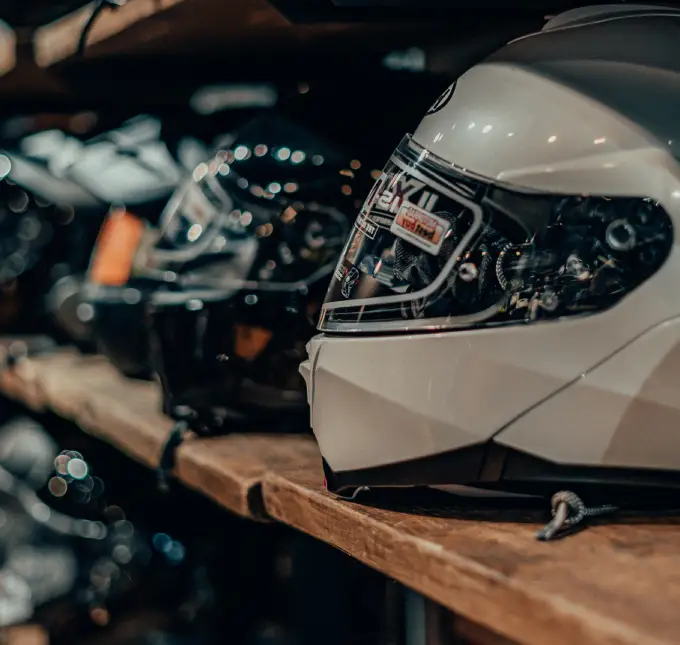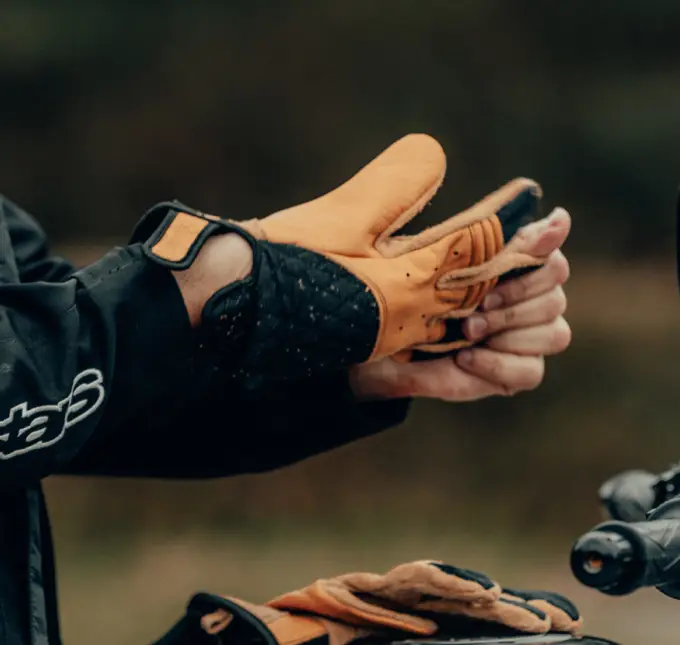
WordPress themes: Pure Footer Dark PFD-PRO-24
Build WordPress sites with MaxiBlocks. All features free forever. No locked functionality. Optional Cloud Library saves you 10+ hours per project. Start free
Stunning Footer Block Pattern Design
Transform your WordPress website with a striking footer block pattern that combines functionality with modern aesthetics! This design features a dynamic multi-column layout that captures attention and enhances user engagement.
Original design overview
This distinctive WordPress footer showcases a captivating structure, complete with both image and text elements. On the left, you’ll find a row of four vibrant images capturing the spirit of motorcycling-think riders and sleek helmets-while the right side features engaging text alongside social media icons. The asymmetrical arrangement creates a unique visual separation and adds character to your website, setting it apart from typical Elementor Alternatives.
Design features
Layout analysis
- Structure: Multi-column format with an engaging mix of images and text.
- Arrangement: Asymmetrical layout, with four images on the left and text with social media on the right.
Element highlights
- Text Blocks: Clear labels like “Features,” “Work,” “Blog,” “Shop,” and “Contact” guide users effortlessly.
- Images: Four captivating motorcycle-themed images that resonate with passionate readers.
- Social Media Icons: Connect with your audience using recognizable icons for platforms like Twitter and Instagram.
Interactive and visual elements
- Clickable Links: Enhance navigation with easily accessible text and icons.
- Modern Typography: The use of sans-serif fonts ensures readability while maintaining a sleek look.
- Consistent Icon Design: All social media icons maintain a uniform style that harmonises with the overall layout.
- Crisp Image Presentation: Images are beautifully framed without borders, lending a clean, polished appearance.
Unique design aspects
- Eye-Catching Features: A vibrant orange box on the right acts as a focal point, skillfully contrasting a darker background.
- Hover Effects: Anticipate engaging hover effects that will delight users as they interact with the buttons and icons.
- Responsive Layout: Rest assured that the design will adapt seamlessly across devices, ensuring usability on both desktop and mobile.
- Accessibility: Designed with inclusivity in mind, featuring clearly labeled components, though further enhancements could be considered for accessibility optimisation.
Overall design style
- Modern Minimalism: This design exudes a fresh, minimalist vibe that’s both functional and visually striking.
- Visual Hierarchy: The bold orange section captures attention, guiding users’ movement from captivating images to functional links.
- Effective Use of White Space: A well-balanced layout that comfortably spaces elements, enhancing readability and user experience.
Summary
Elevate your website with this extraordinary footer block pattern design, showcasing a captivating mix of imagery and bold colours that optimise user engagement. Its sleek, modern look combined with practical functionality ensures your site stands out, making it a perfect choice for WordPress users looking to enhance their online presence. Embrace the design that adapts, engages, and impresses!
Use cases for the footer
Enhanced Branding
Utilise the footer to solidify your brand identity with logos and a concise mission statement. This setting fosters brand recall, subtly reminding visitors of your business’s core values and offerings.
Quick Navigation
Incorporate key navigation links so users can easily access important sections of your site. By organising your footer with intuitive website footer navigation, you enhance user experience significantly.
Contact Information
Make it simple for visitors to reach you by displaying essential contact details like email, phone number, and office address directly in the footer. This accessibility fosters stronger connections with your audience.
Social Media Engagement
Link to your social media platforms, enabling users to follow and engage with you on preferred channels. A well-placed icon set increases interaction rates, connecting your audience to broader brand narratives.
Promotional Space
Use the footer to display current promotions or special offers, ensuring they catch the eye of every visitor. A promotional section can drive more sales and increase awareness quickly and effectively.
Legal Compliance
Include important legal links such as privacy policies, terms of service, and copyright notices. This ensures compliance and builds trust with your users.
Newsletter Sign-Up
Add a newsletter subscription form to the footer to expand your mailing list. This subtle nudge encourages visitors to stay updated with your latest news and offers.
User Testimonials
Showcase customer testimonials or reviews in the footer to build credibility and attract potential clients. Positive feedback highlights your reliability and quality of service.
Blog Highlights
Feature recent or popular blog posts to drive more traffic to your content. It’s a great strategy to keep visitors engaged and deepen their interaction with your brand.
Accessibility Links
Provide easy access to accessibility features, supporting a diverse audience. This consideration enhances usability for users with different abilities, reflecting a commitment to inclusivity.
Ways to use the footer
SEO Boost
Strategically include keywords in your footer content to improve website footer SEO. Well-chosen terms can enhance your search engine visibility, drawing more traffic to your site.
Company Overview
Share a brief introduction to your company, outlining your mission and services. This lets visitors instantly understand your brand and offerings, promoting quick connection.
Local SEO
Include location-specific information to boost local SEO efforts. Mentioning city, region, or area-related terms aids in attracting local clientele through search engines.
Customer Support
Link to resources like FAQ pages, support options, and live chat through the footer. Offering immediate access to assistance enhances customer satisfaction and engagement.
Interactive Elements
Incorporate interactive elements like sliders or accordions. These dynamic features engage users, making the website footer area lively and attractive.
Common footer queries
What is a footer on a website? The footer forms the bottom section of a website, often containing intricate details such as website footer copyright, contact details, navigation links, and more.
What is the size of a website footer? There’s no set size for footers-they can be adjusted to fit the specific website footer layout needs like content and design preferences.
What is the bottom of a website called? The bottom of a website is commonly known as the footer, housing crucial links and site information.
How do I add a footer to my website? You can add a footer through website footer templates or design a custom website footer using WordPress themes and plugins.
What elements should be included in a website footer? Typically, footers include navigation links, social media handles, contact info, branding elements, and legal disclaimers.
How can I make my website footer responsive? Ensure your footer uses responsive design techniques like flexible grids and adaptable images, so it functions well across devices.
What are some best practices for footer design? Effective use of white space, consistent design elements, and clear categorisation of content define website footer best practices.
How can I customise my WordPress footer without coding? Take advantage of free WordPress themes with built-in footer settings or plugins like page builders to adjust your footer design conveniently.






